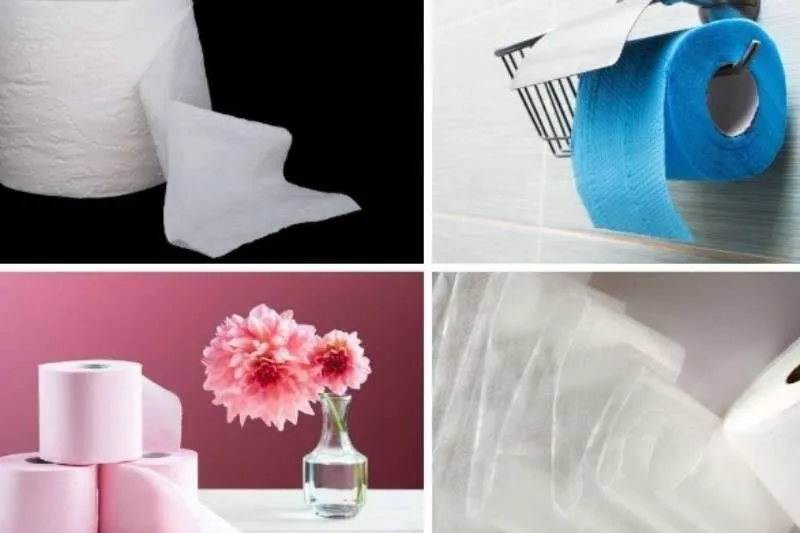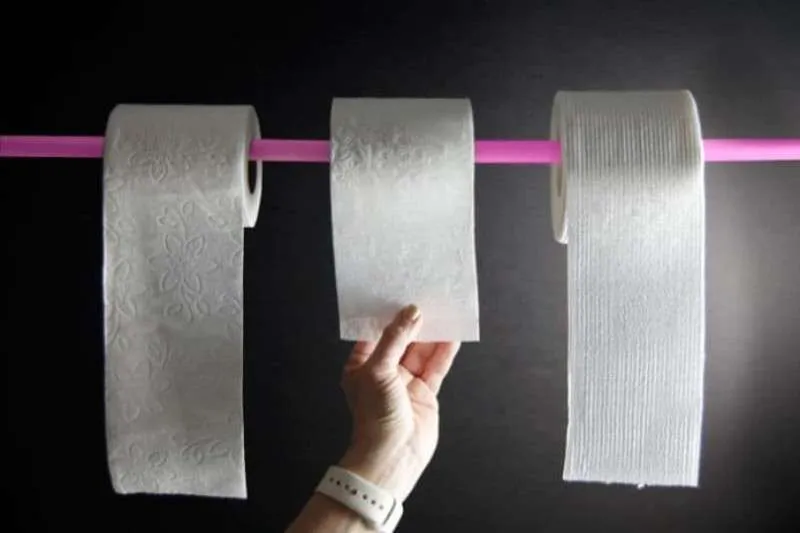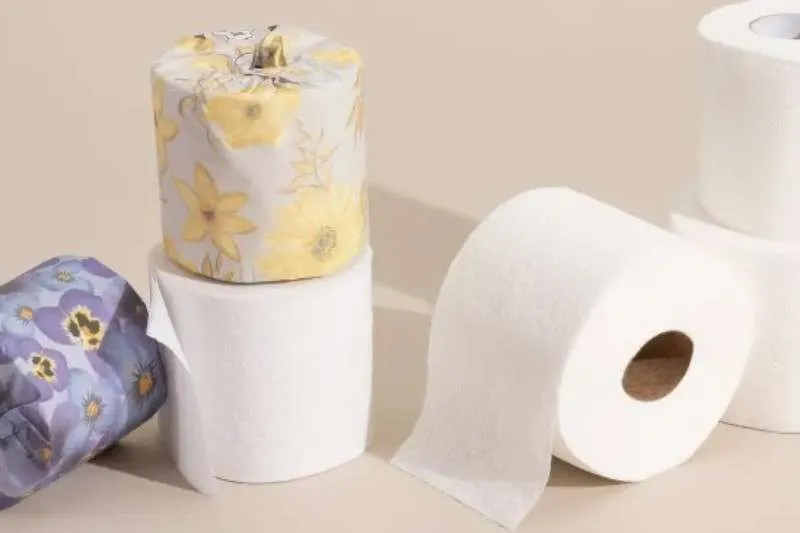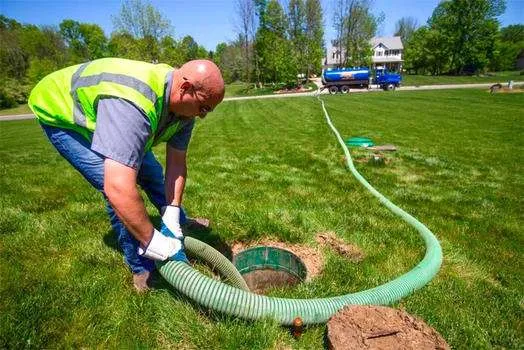Are you having trouble figuring out what toilet paper to use with your septic system? With so many brands, formulations, and types available today, it can be difficult to determine the best options. You want something effective and safe for your tank – but how can you know which product will do the job without damaging your plumbing system or causing a backup?
We’ve compiled this guide with everything you need to know about selecting optimal toilet paper choices for septic systems. We’ll cover everything from differentiating between single-ply and double-ply products to learning more about dissolvable formulas! Let’s get started now.
Introduction to toilet paper and septic systems
Toilet paper is necessary for any bathroom, but there are some considerations to consider when selecting toilet paper for use with septic systems. To begin, it is important to understand how septic systems work and why certain types of toilet paper may be more or less suitable for use with them. Septic systems rely on bacteria to break down the solid waste that enters them. If regular toilet paper is used, it will not dissolve quickly enough and can clog the system, causing serious damage.
Many important factors must be considered when selecting the right toilet paper for use with septic systems. The type of paper (recycled or non-recycled), the number of plies, and even the size and shape of the two single-ply toilet paper can make a difference. Generally, it is best to opt for toilet paper labeled as septic-safe. This toilet paper will dissolve quickly, reducing the risk of clogging and other damage to your system.
It is important to note using the wrong type of toilet paper with your septic system can hurt its performance and longevity. Non-septic-safe toilet paper may not dissolve quickly enough, leading to clogs and other problems. Additionally, some types of non-septic safe toilet paper contain dyes, recycled fibers, or fragrances that can negatively impact the bacteria in the septic system, disrupting its ability to break down waste efficiently.
By selecting toilet paper for your septic system, you can protect it from damage and ensure it lasts as long as possible. Septic-safe toilet paper is designed to dissolve quickly and not interfere with the natural processes of your septic system. This is the worst toilet paper and is the best option for keeping your septic system healthy and functioning properly.
Characteristics of septic-safe toilet paper

When selecting toilet paper for your home septic system, consider the product’s characteristics to ensure it won’t put undue strain on your septic tank and drain field. Toilet paper with a high percentage of recycled material should be avoided as it tends to break down more slowly than its non-recycled counterparts. Biomaterials are materials made from plants or animals that decompose faster than traditional paper products. Most septic-safe toilet papers are made from biomaterials and non-recycled materials, which help ensure the product breaks down quickly.
The manufacturing process also plays an important role in how well your toilet paper will break down when it enters your septic system. Look for toilet paper processed with minimal chemicals, as these will break down quickly and be less likely to clog the pipes or cause any other issues in your septic system. Additionally, select a toilet tissue product labeled “septic-safe” or “biodegradable” before purchasing it as a certified septic-safe.
Selecting toilet paper with the right characteristics and manufacturing process ensures your septic system runs smoothly and efficiently. Toilet paper choices for septic systems are important, so consider all the factors before purchasing. With the right product, you can keep your septic tank healthy and free from clogs and other problems. Remember, the better you care for your septic system, the longer it will last.
Popular septic-safe toilet paper brands and options
Popular septic-safe toilet paper brands and options can range from tried-and-true traditional products to newer, more eco-friendly products. Popular brands such as Charmin, Scott, Cottonelle, and Quilted Northern are safe for septic tank systems. Charmin offers Ultra Strong and Ultra Soft varieties, which are septic-safe.
Scott toilet paper is available in many septic-safe varieties, from Comfort Plus and 1000 lines. Cottonelle offers CleanCare and Ultra ComfortCare toilet paper as septic tank-safe options. Quilted Northern has a variety of bathroom tissue called Ultra Plush that is considered a good choice for those with septic systems.
Recommended septic-safe toilet paper brands and types include those made from recycled materials, such as Seventh Generation Recycled Toilet Paper. This option is both biodegradable toilet paper, septic-safe and eco-friendly. Other recommended options are biodegradable septic tank-safe toilet papers such as Bim Bam Boo’s Septic Country toilet paper, made from bamboo. This brand of bamboo toilet paper is strong, absorbent, biodegradable, and septic-safe.
Comparing price, quality, and environmental impact can help you decide which septic-safe toilet paper to choose from. Consider the cost of each option and compare it to how well it performs and how long a roll will last. Also, consider the environmental impact of each option. Look for understanding labels that describe the materials used in making the paper and the process by which it was made. This can help you decide what toilet paper to use when dealing with septic systems.
Toilet paper alternatives for septic system owners
For many homeowners, having a septic system requires additional attention and care. An important factor in maintaining a healthy septic system is the type of toilet paper its occupants use. Too thick or strong toilet paper can create blockages in your pipes and tank, leading to costly repairs or worse. Fortunately, there are a few different alternatives to traditional toilet paper that can help you keep your septic system functioning properly.
Bidets have become increasingly popular as an alternative to toilets. A bidet device uses a stream of water to clean the user’s posterior without additional cleaning supplies. They are much gentler on your pipes than traditional toilet paper, which can reduce blockages and help maintain the health of your septic system. Many bidets also have heated water and a drying feature, making them an attractive option for many homeowners.
For those looking to stick with traditional toilet paper, a few brands are specifically designed for septic systems. These usually have thin sheets from softer materials that won’t clog your pipes. You’ll want to choose a toilet paper labeled “septic safe” or “safe for sewer systems” before buying it.
When considering new toilet paper choices for septic systems, weighing each option’s benefits and drawbacks is important. While toilet paper alternatives can be gentler on your pipes, they may require additional maintenance or upfront costs. Similarly, “septic safe” toilet paper may cost more than traditional varieties and not offer the same softness and comfort as other brands.
Tips for responsible toilet paper usage in Septic systems
Using toilet paper responsibly in septic systems is essential for the quality of your wastewater treatment. Here are some tips to help you make sure that you’re using the appropriate amount of toilet paper for septic systems and disposing of other materials correctly:
- Use only a recommended amount of septic-safe toilet paper per flush. Too much toilet paper can cause clogs and blockages in your septic system.
- Make sure to choose toilet paper labeled as “septic-safe” or “flushable.” This type of toilet paper has been specially designed to break down quickly in a septic environment, preventing blockages and other issues that can cause damage.
- Avoid flushing anything other than toilet paper and human waste, such as wet wipes or paper towels. These materials do not break down quickly enough in a septic system and can cause clogs and backups.
Following these tips for responsible toilet paper usage in septic systems will help keep your system running smoothly and efficiently for years.
Monitoring your septic system for toilet paper-related issues

Toilet paper choices for septic systems are important, as the wrong types of toilet paper can cause clogs, odors, and other problems with your septic system. Monitoring your septic system for any potential issues related to toilet paper is key to ensuring it remains in good condition and functioning properly.
Signs of toilet paper-related septic system problems can include slow or clogged drains, foul odors from the scented toilet paper or drains, gurgling noises in the pipes, and murky water backing up into the tubs or sinks. If any of these signs are present, taking action immediately is important to avoid further damage to your septic system.
When selecting the right toilet paper for your septic system, selecting ultra-soft tissue paper or an option that breaks down quickly and easily in water is important. This will help reduce clogs and buildup in your pipes and tank. Additionally, avoid using too much toilet paper for septic all at once; this can also cause clogs.
Regular septic system inspections and maintenance are important to ensure your system functions properly. Have a professional inspect and maintain your septic system regularly to catch any potential issues caused by toilet paper. This will help you avoid costly repairs in the future.
FAQs
Can I use any toilet paper with my septic system?
No, not all toilet paper is flushable wipes suitable for septic systems. Toilet paper labeled “septic safe” or “flushable” should be used instead.
What makes toilet paper septic-safe?
Septic-safe toilet paper is designed to break down quickly in water, preventing clogs and buildup in your pipes and septic tank. This type of toilet paper usually has thinner sheets made from softer materials.
What are some recommended septic-safe toilet paper brands?
Several brands offer septic-safe toilet paper, such as Scott 1000 Sheets Per Roll Toilet Paper and Cottonelle Ultra ComfortCare Toilet Paper. Some generic store brands also offer septic-safe varieties of special toilet paper.
Are there any eco-friendly septic-safe toilet paper options?
Several eco-friendly septic-safe, and biodegradable toilet paper options are available. Some popular brands include Seventh Generation Ultra Soft Toilet Paper and Eco-Max 100% Recycled Paper. These types of toilet paper use fewer natural resources and fewer chemicals to produce and are biodegradable, making them a great choice for environmentally conscious households.
Can I use wet wipes or other alternatives with my septic system?
Wet wipes, chlorine bleach, and other alternatives should not be used with a septic system. These materials do not break down quickly enough in a septic environment and may cause clogs and backups.
Conclusion
This guide should have been enlightening for anyone looking for the best toilet paper choice for their septic tank. You now have different techniques in your arsenal, from dissolvable options to thicker ones. Be sure to seek out experts about using free bamboo toilet paper for septic tanks if you ever want more assistance with this process. Finally, if you need advice on where to look for quality toilet paper choices for septics, remember that there are plenty of great providers to choose from.


